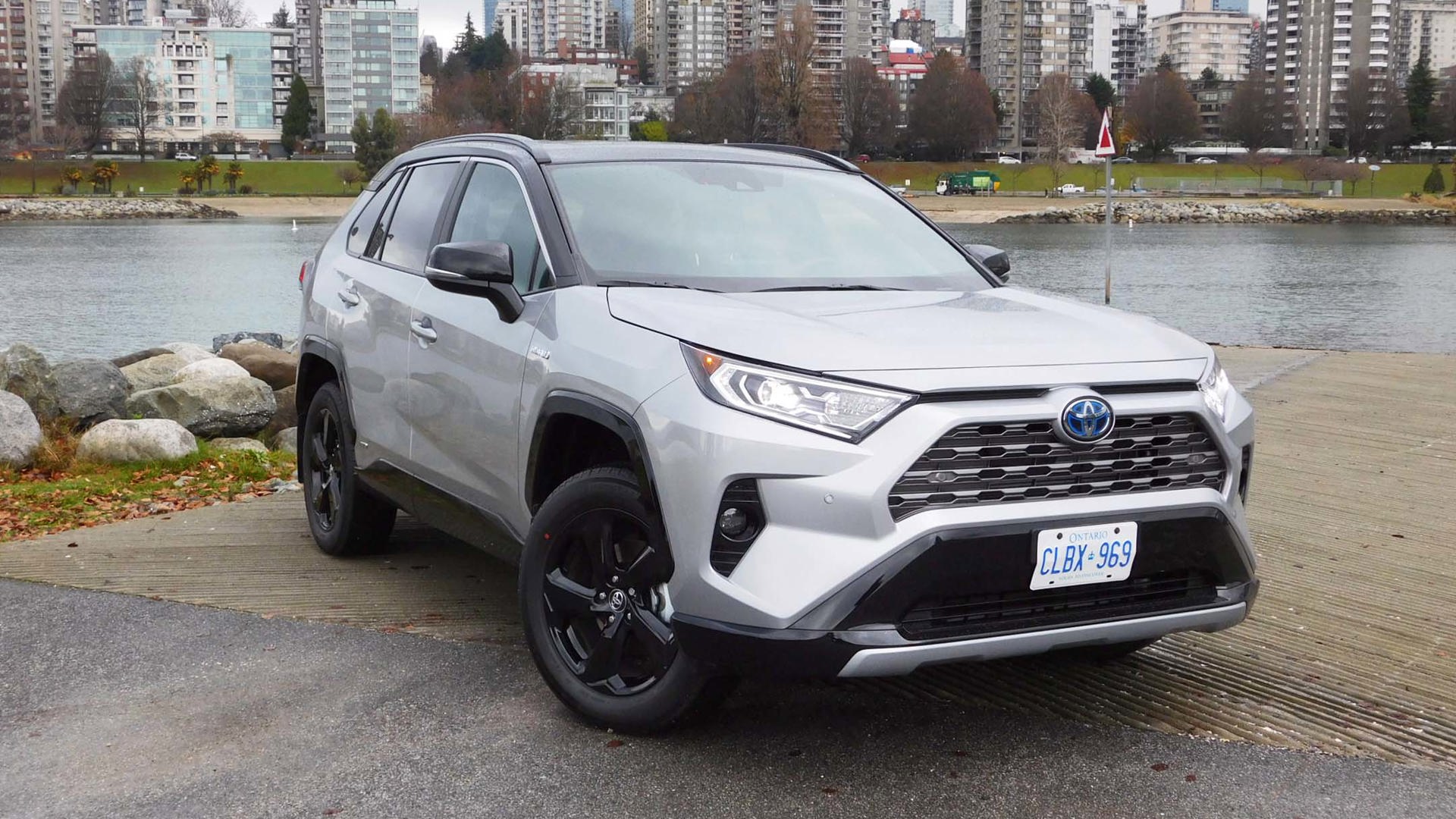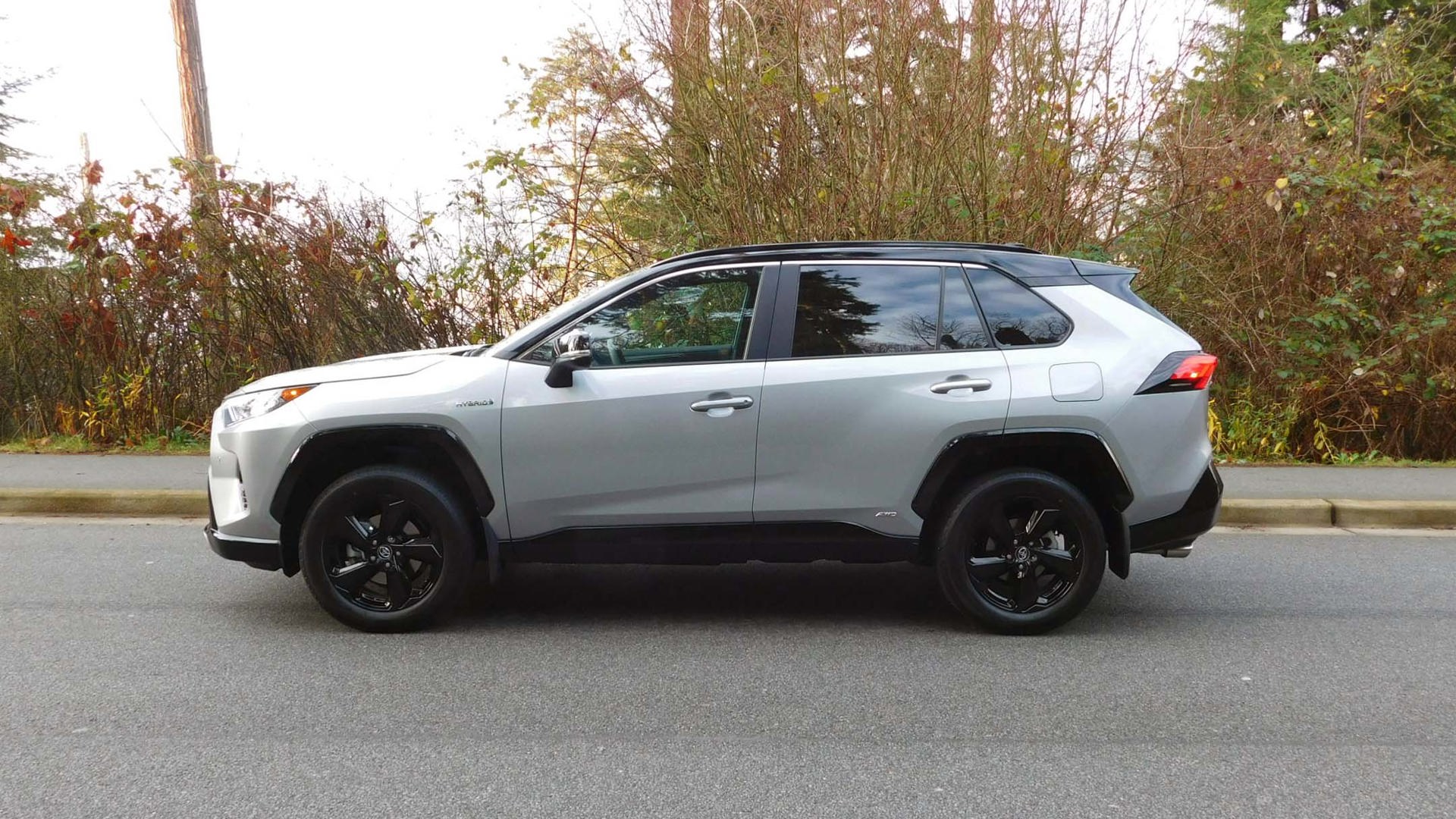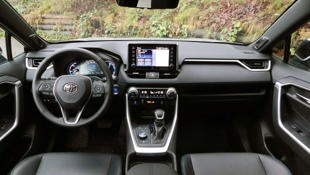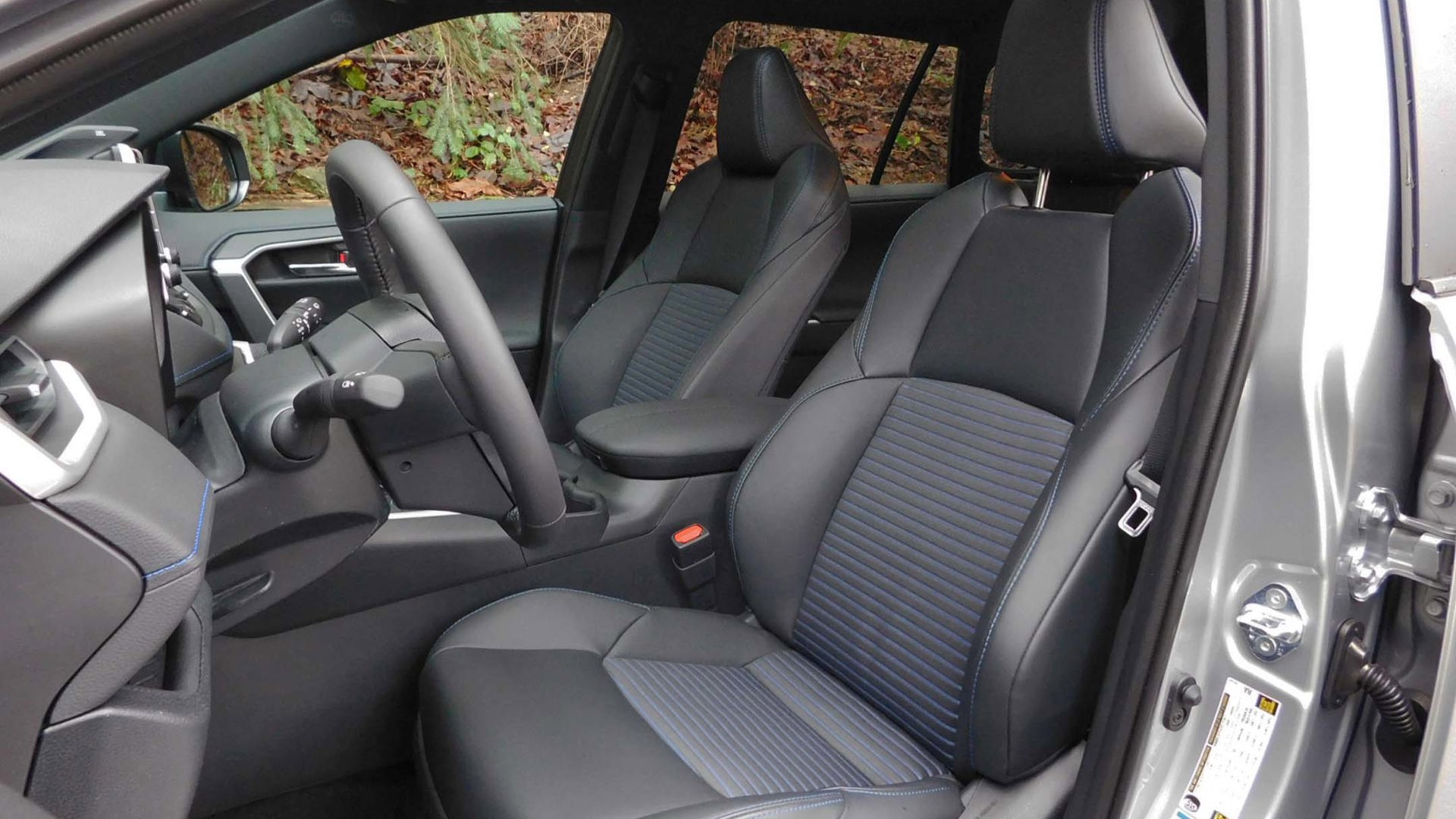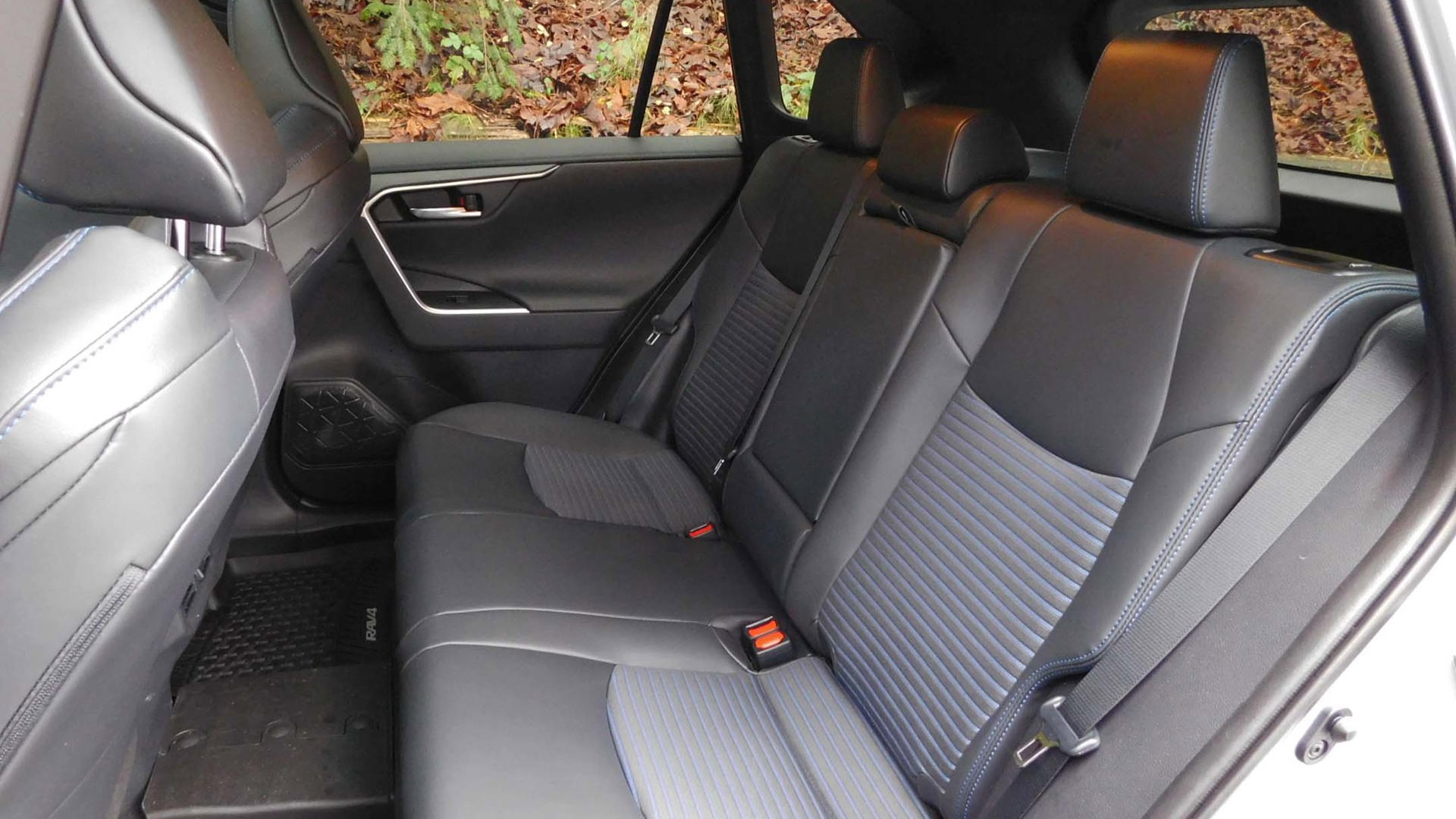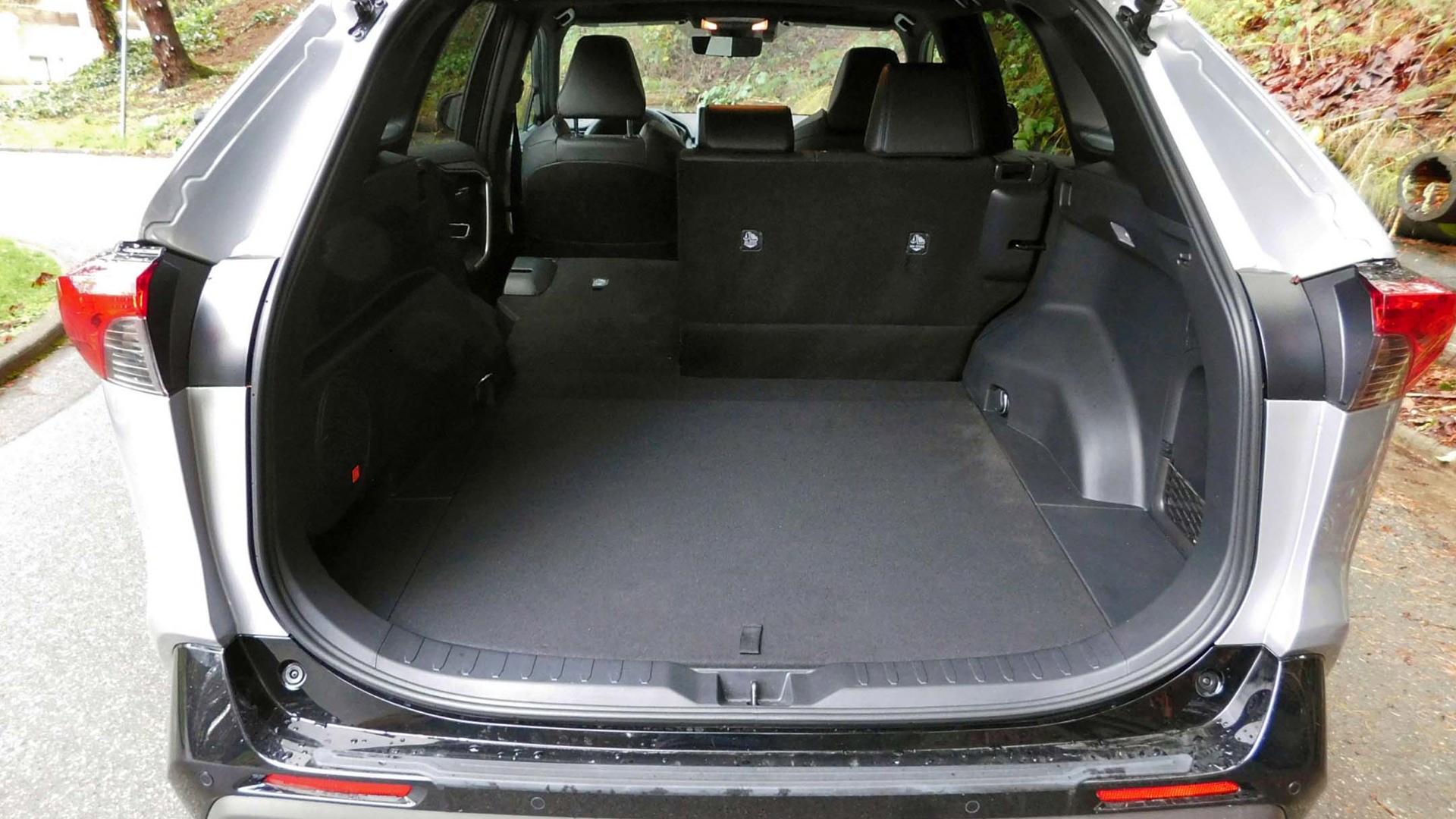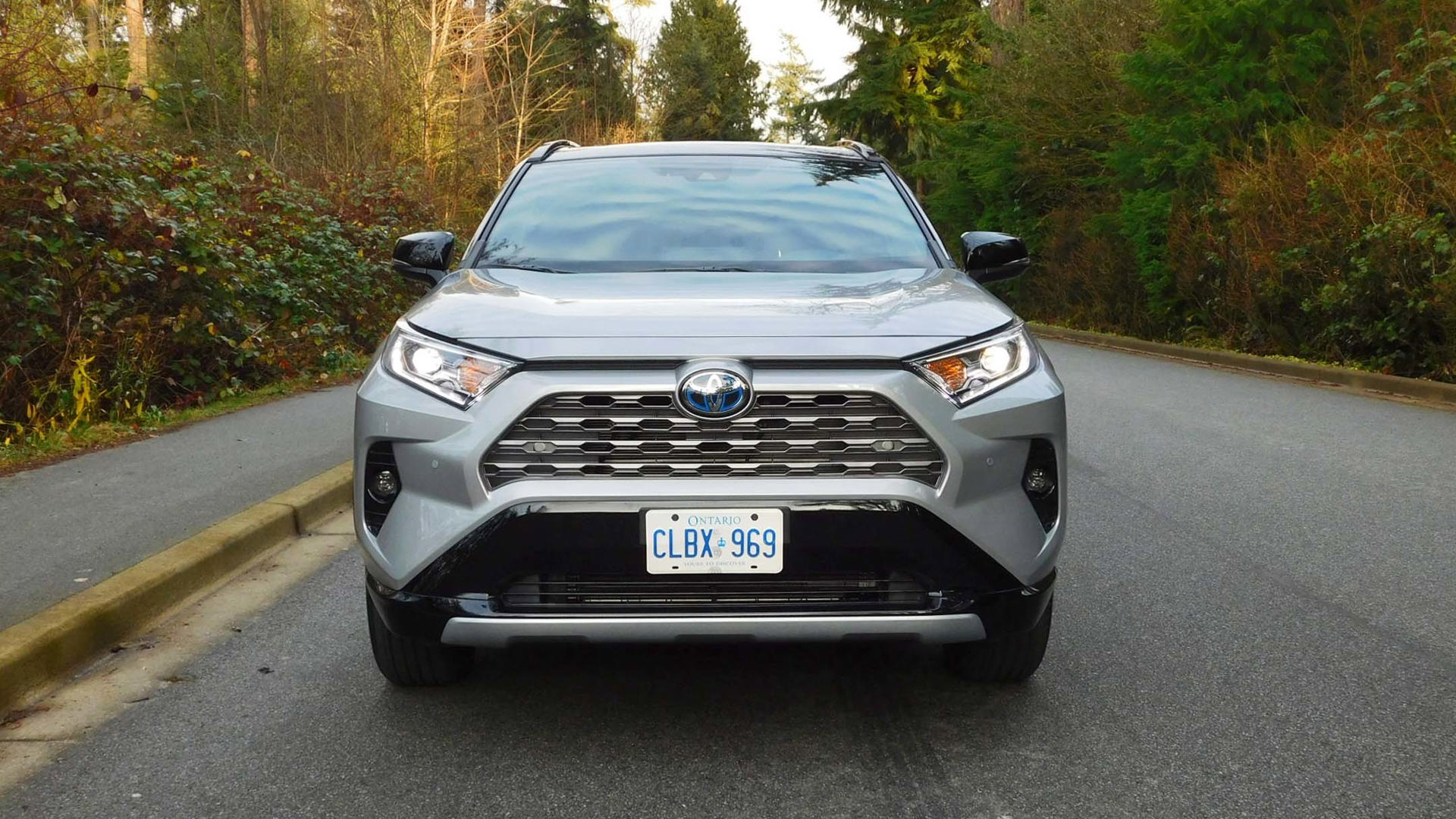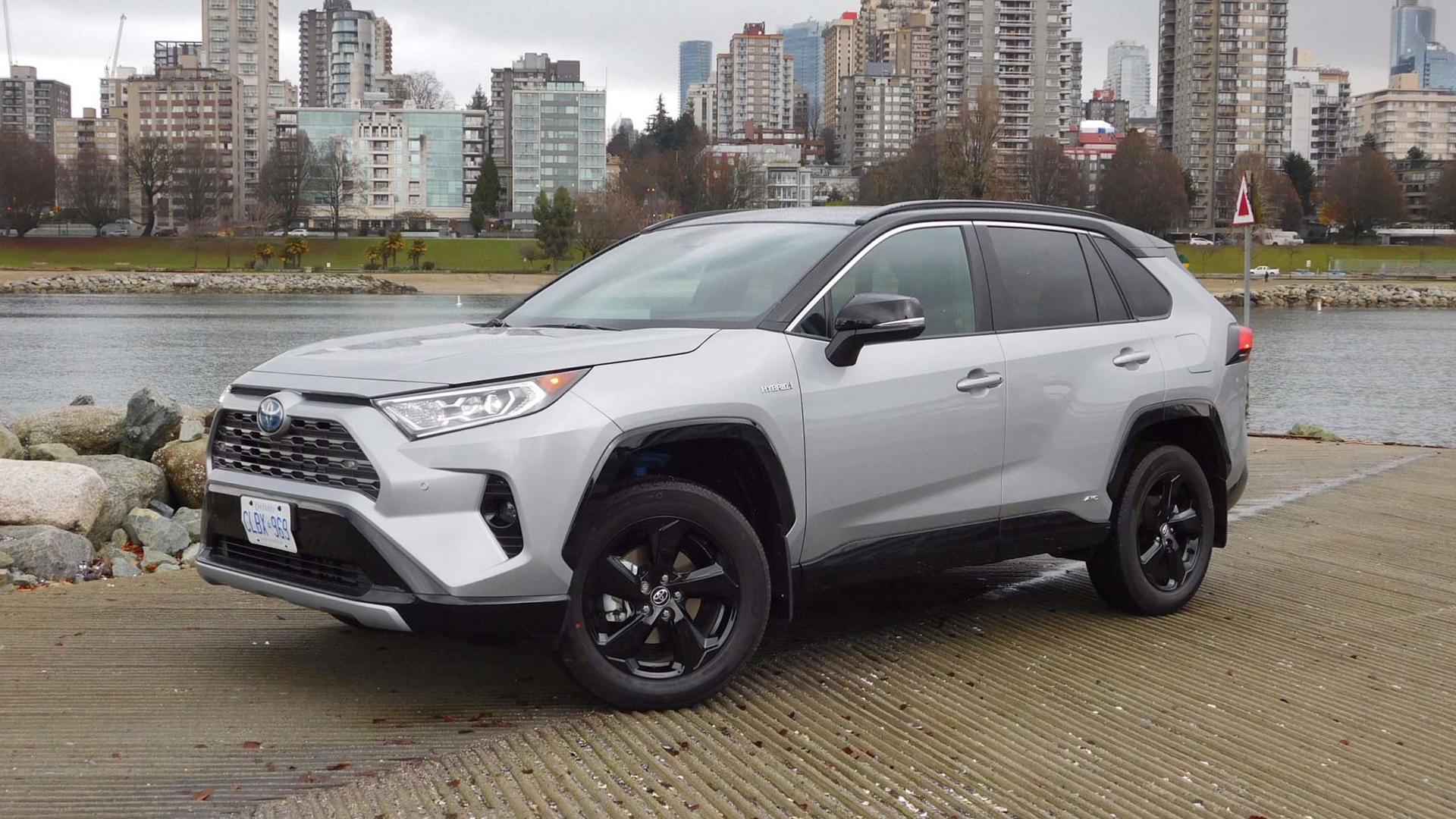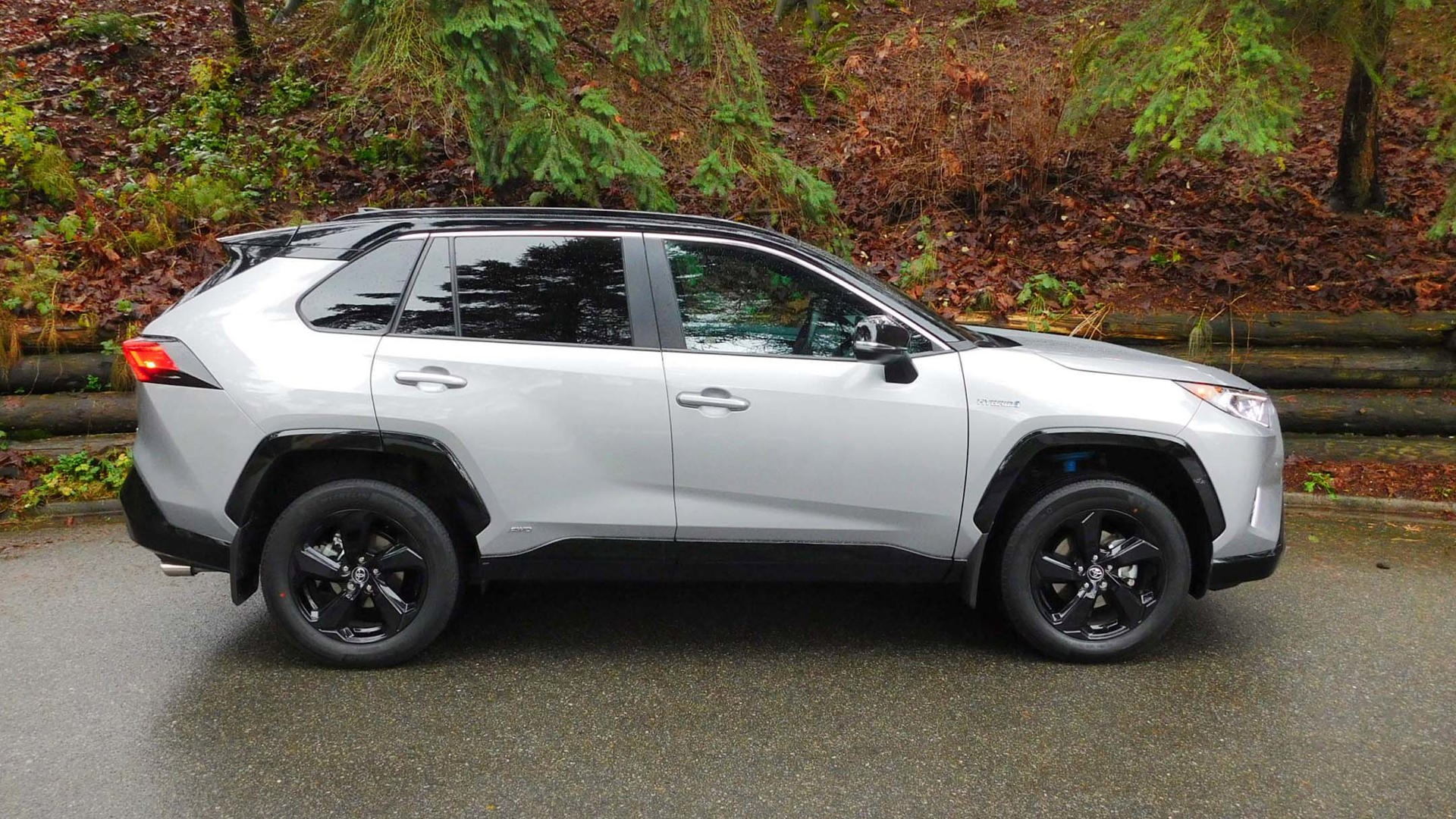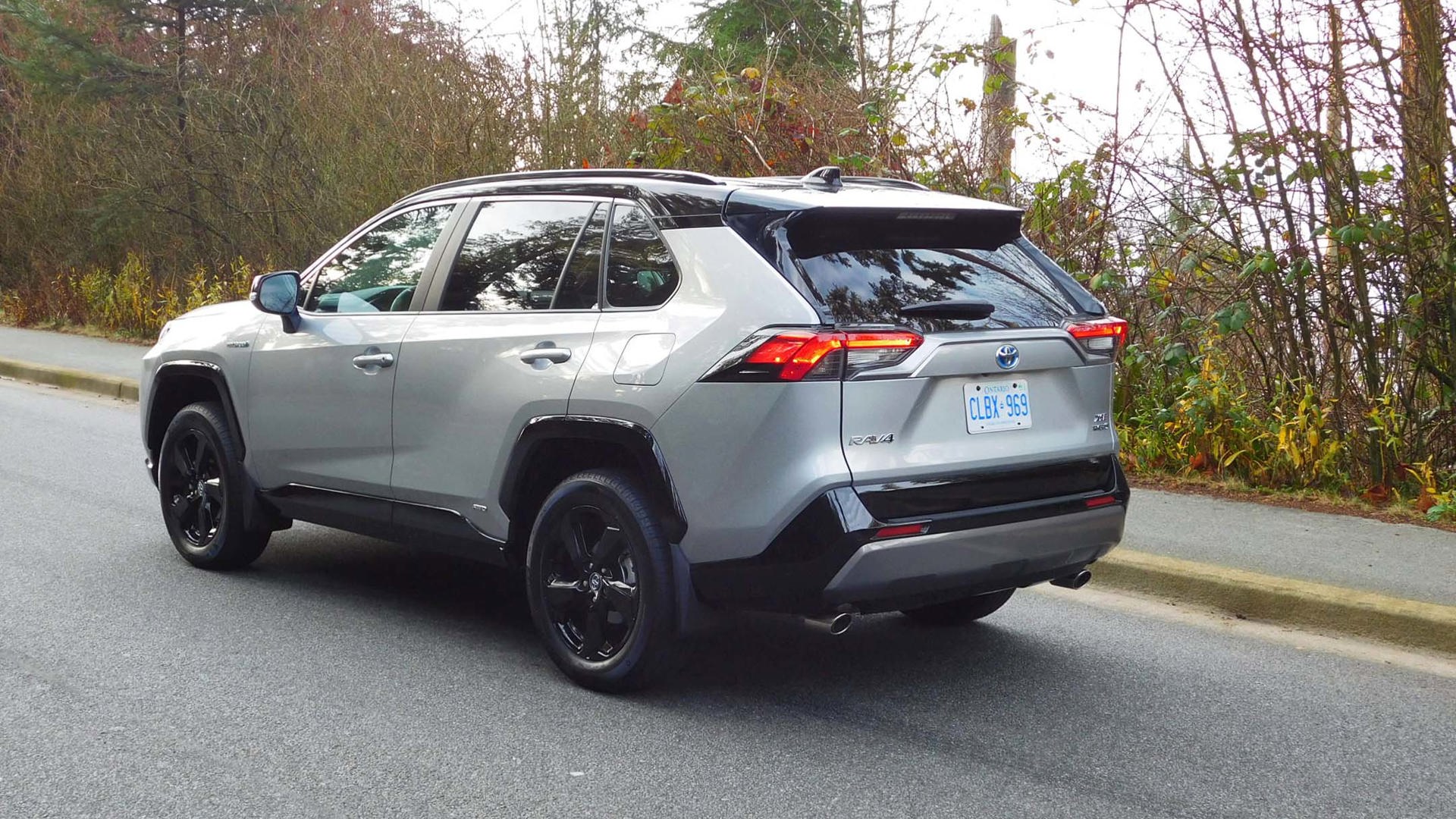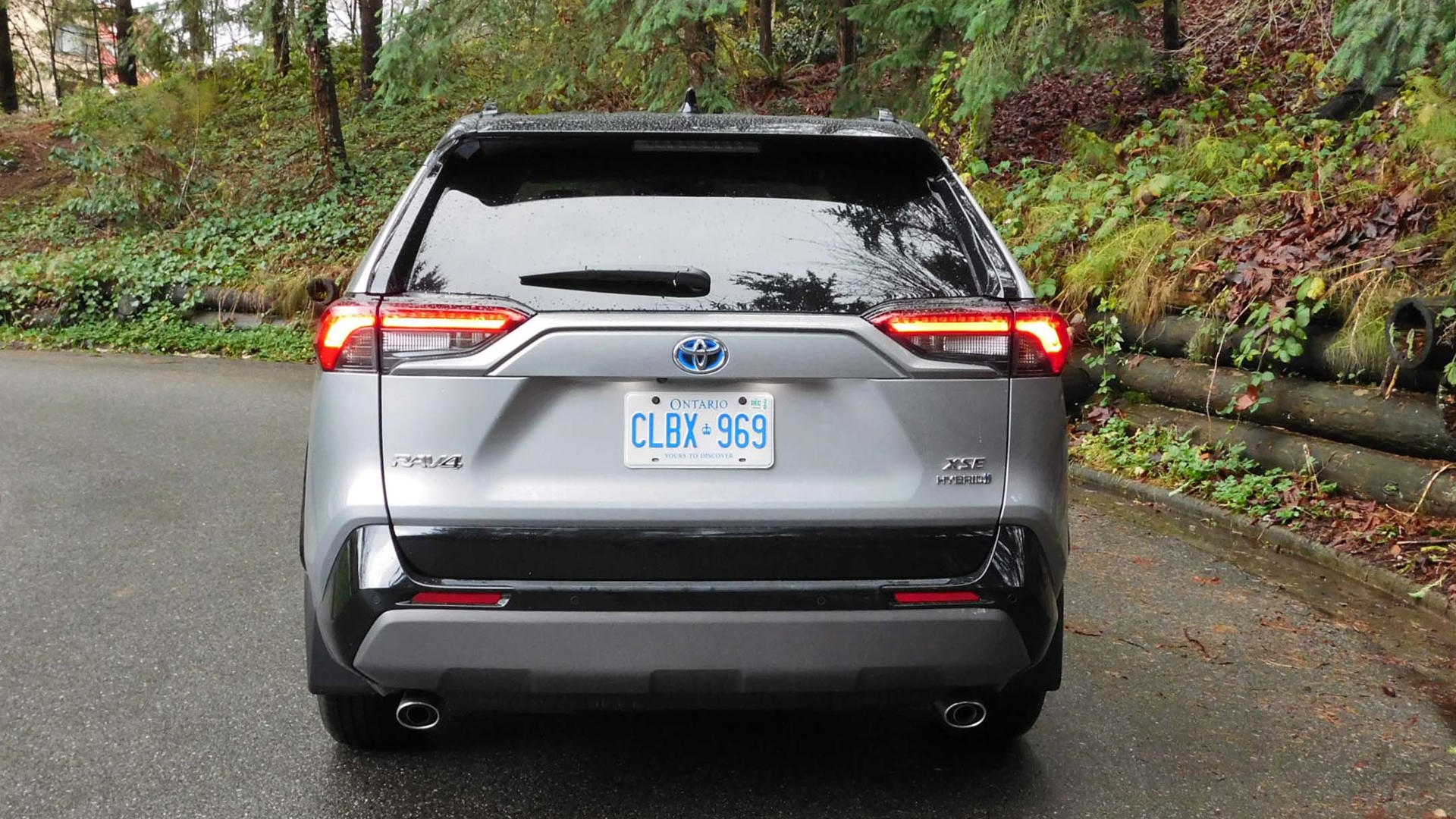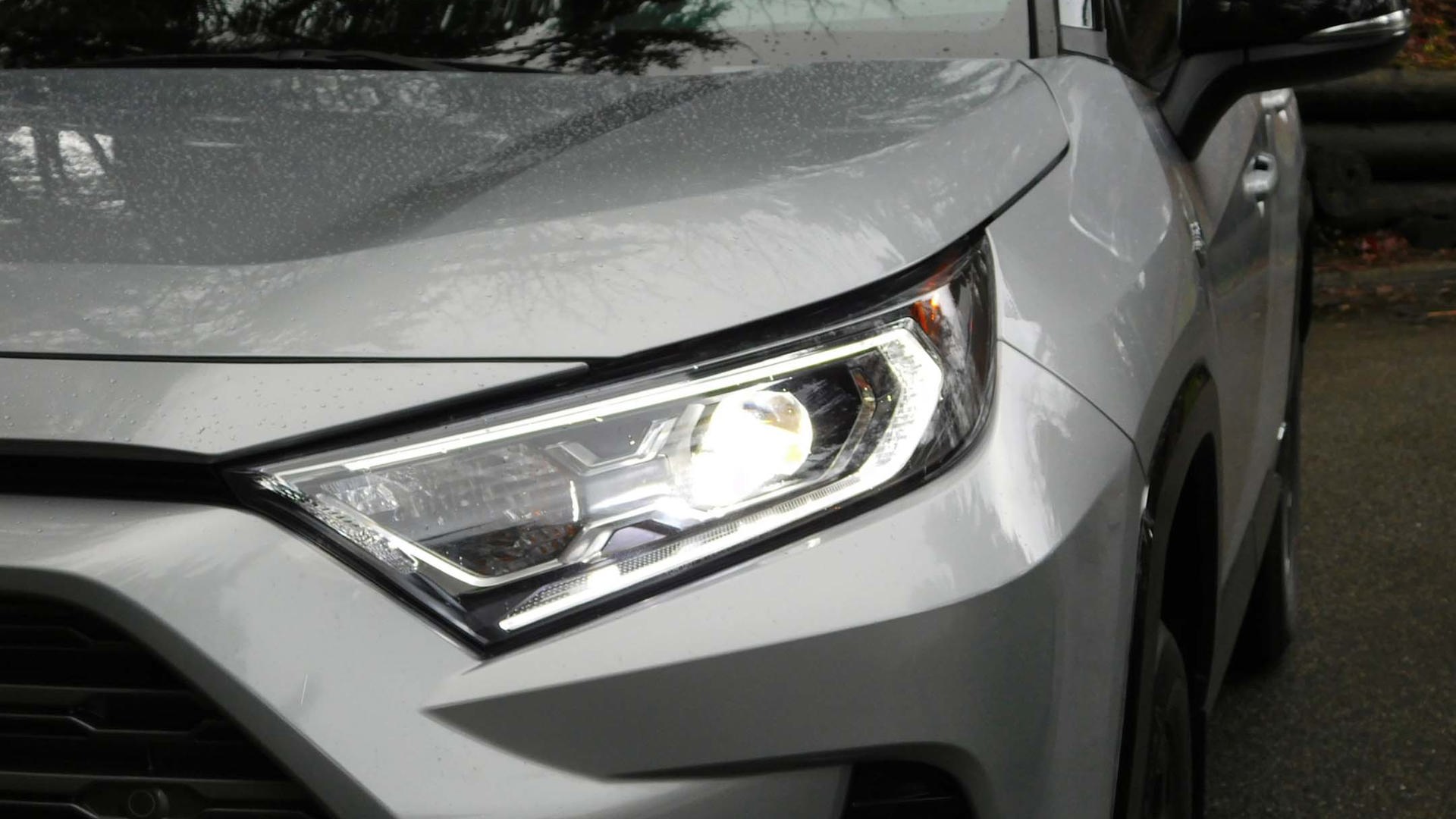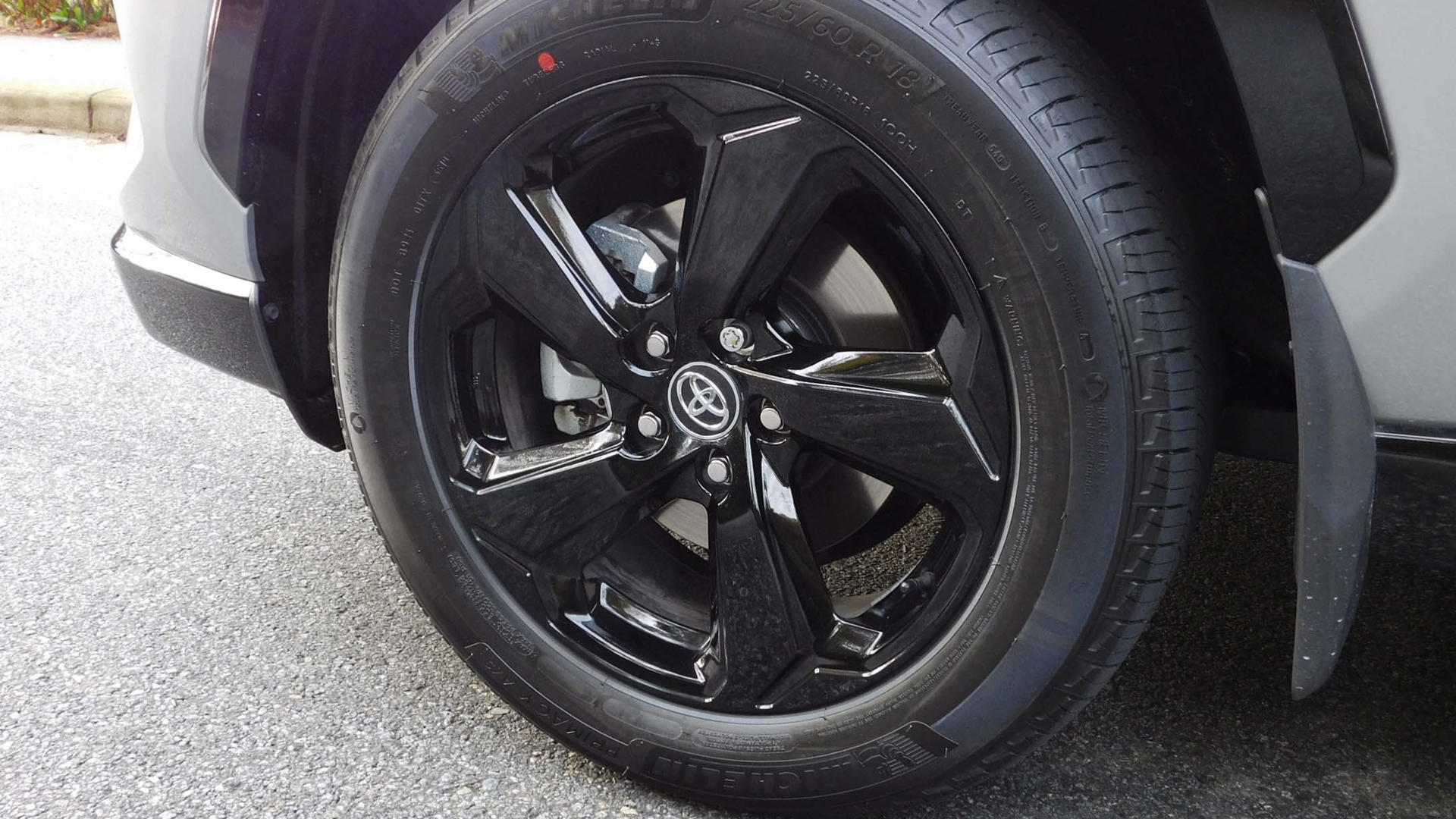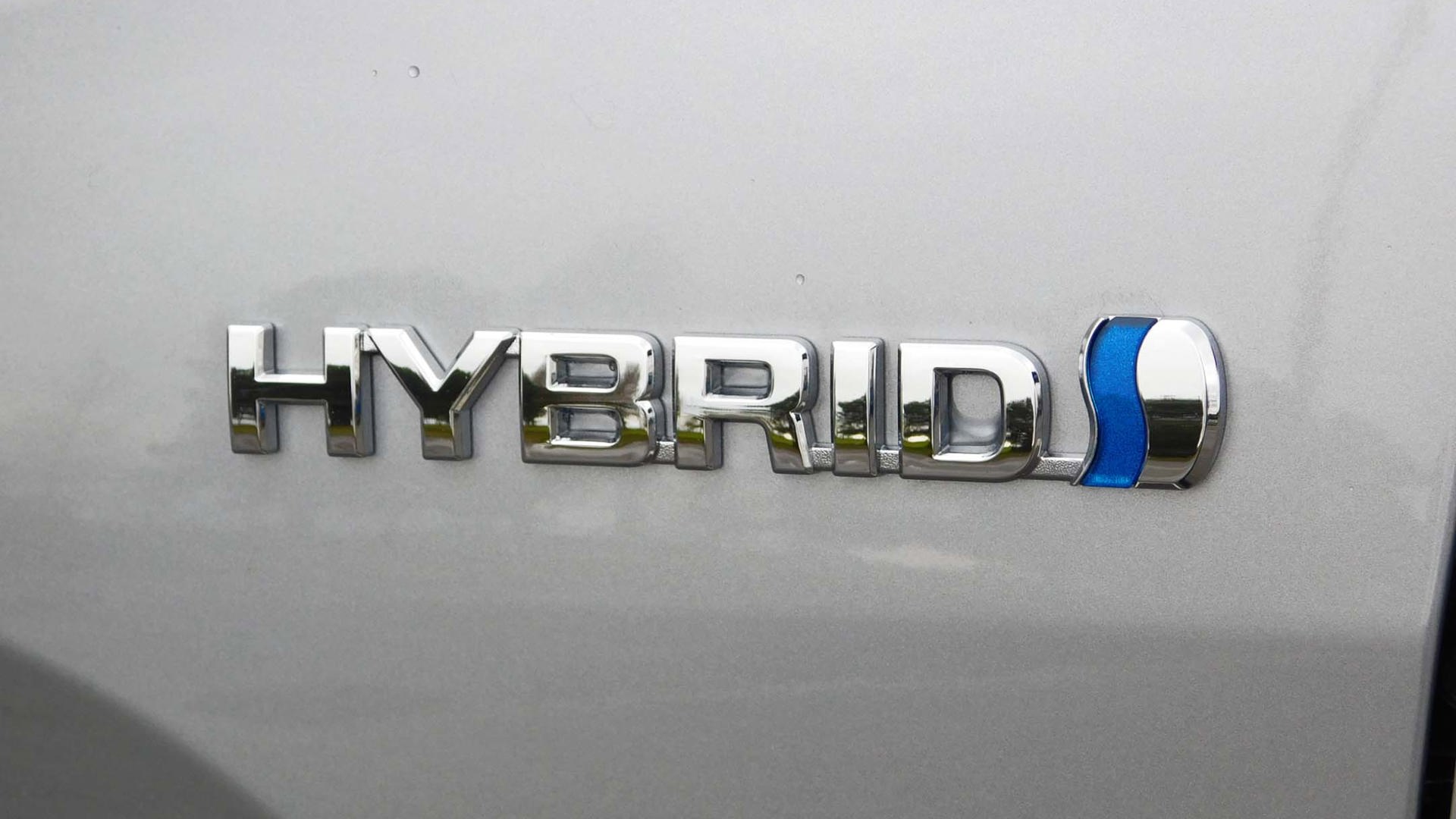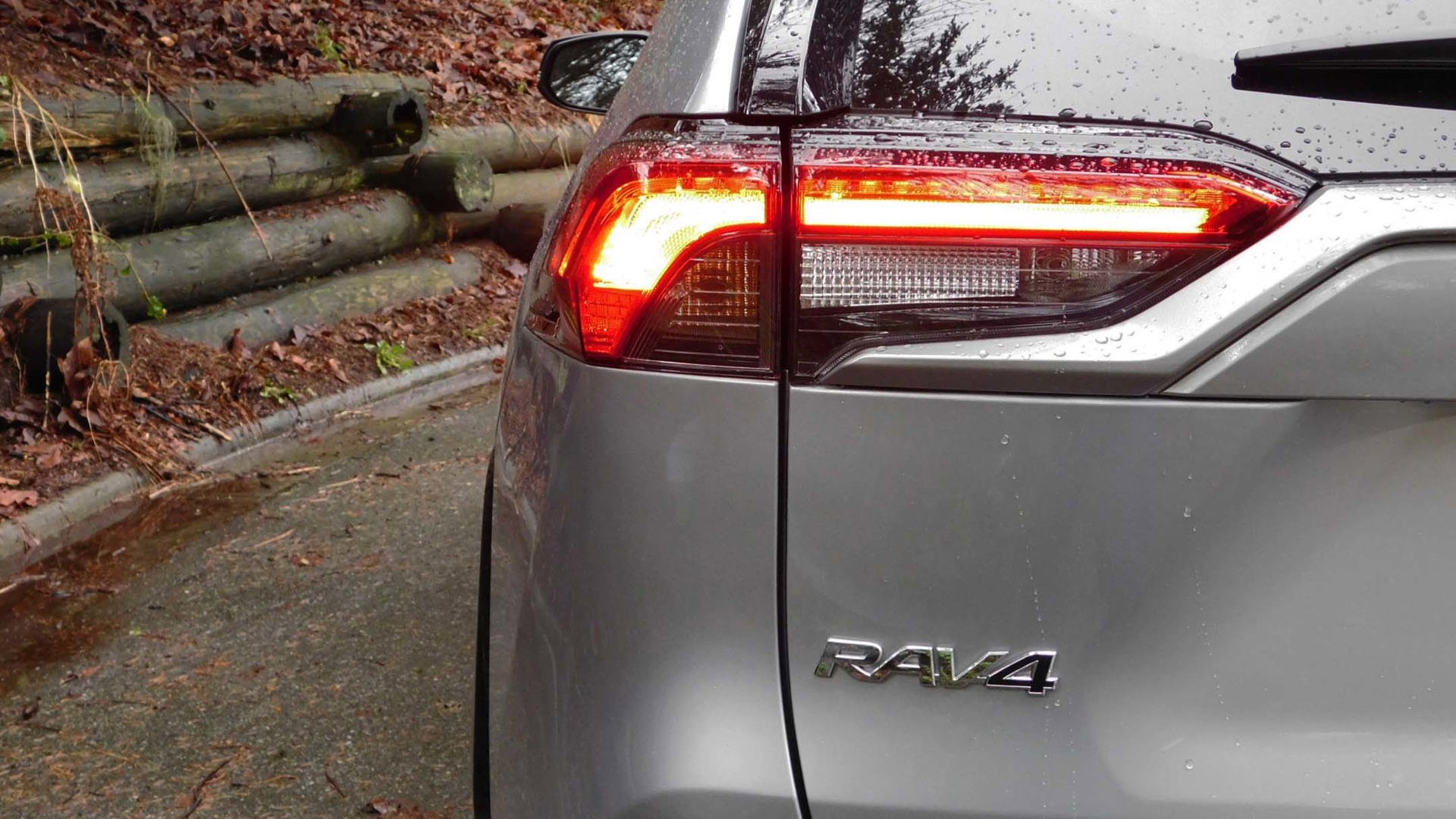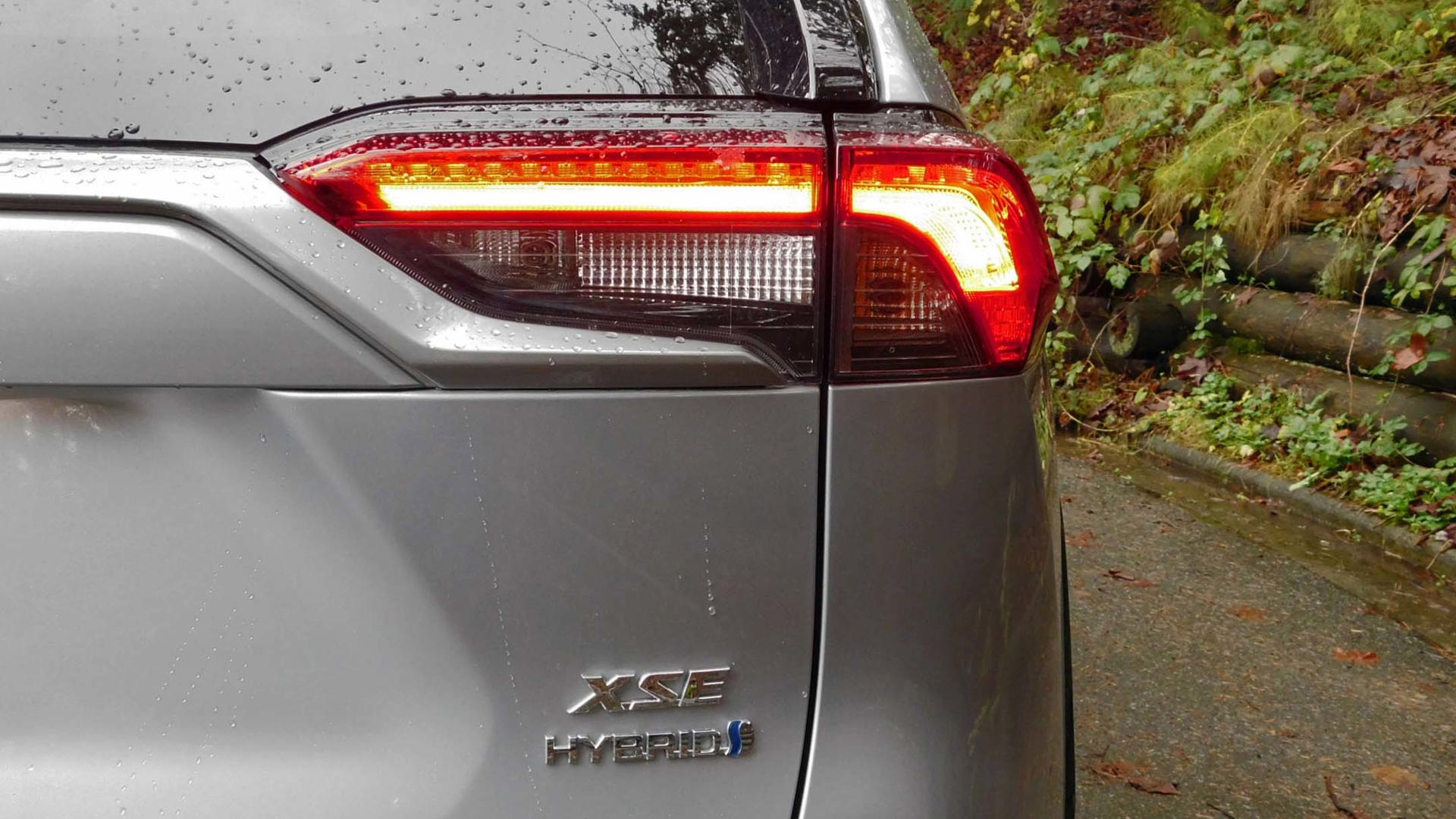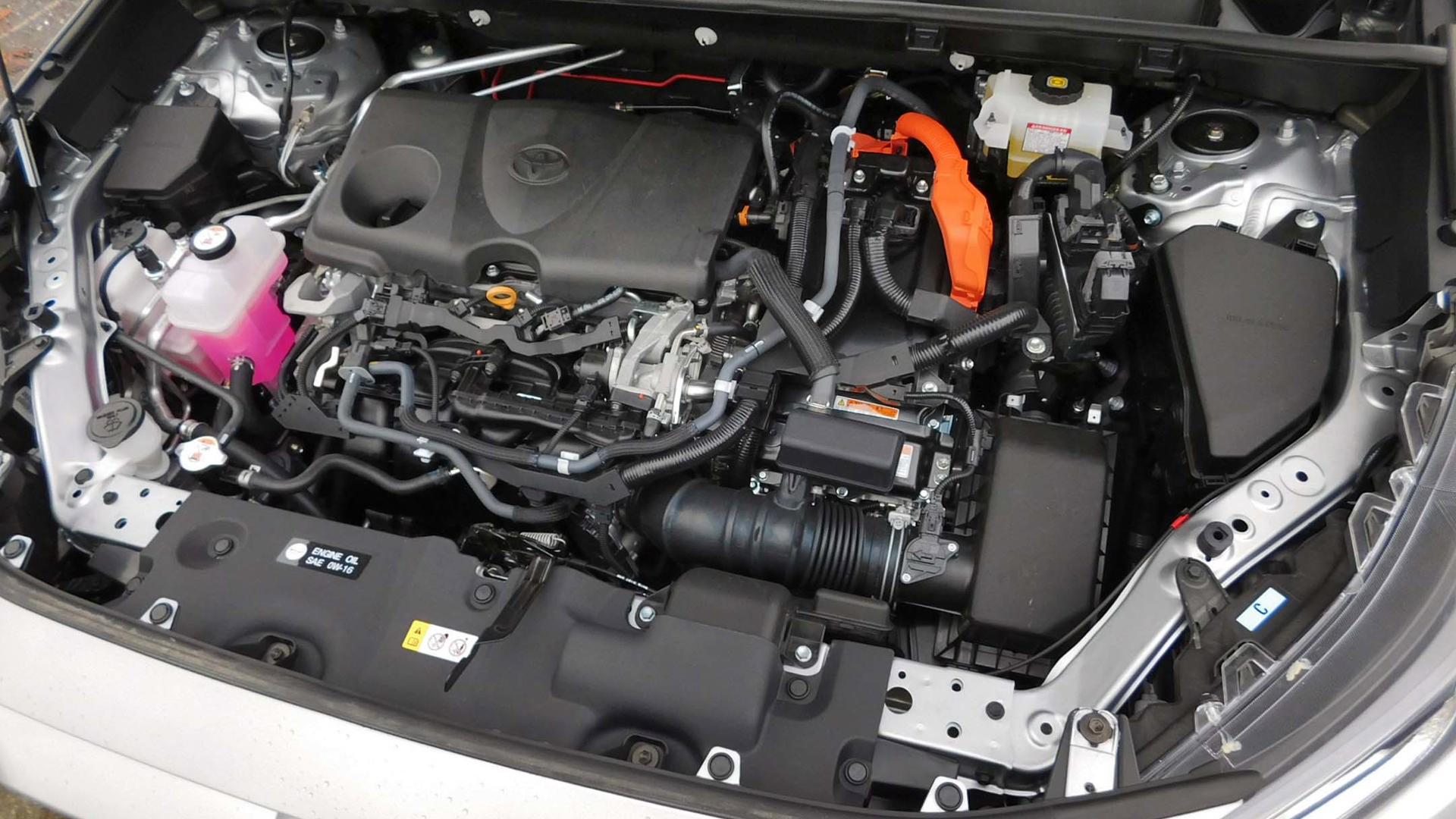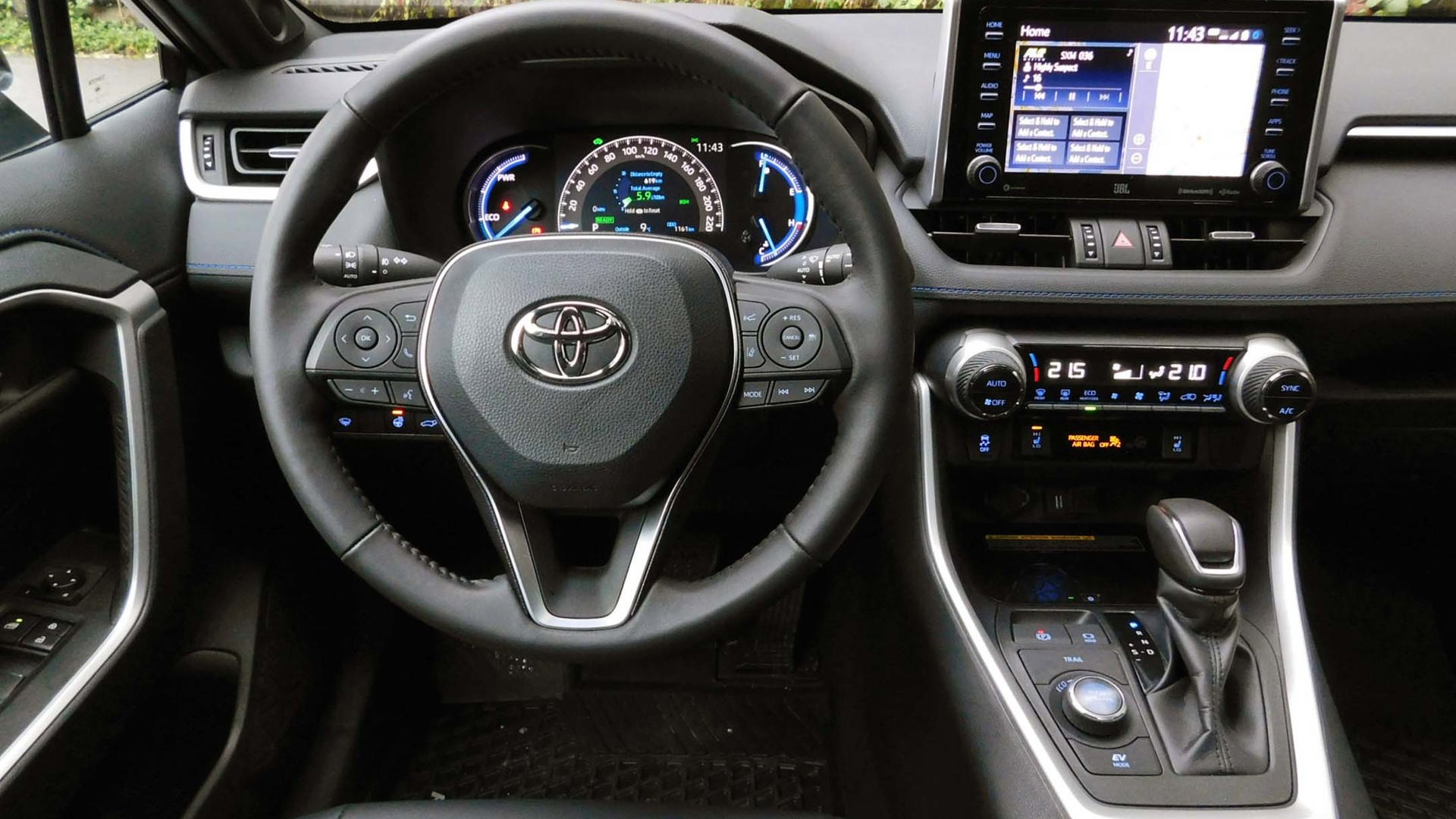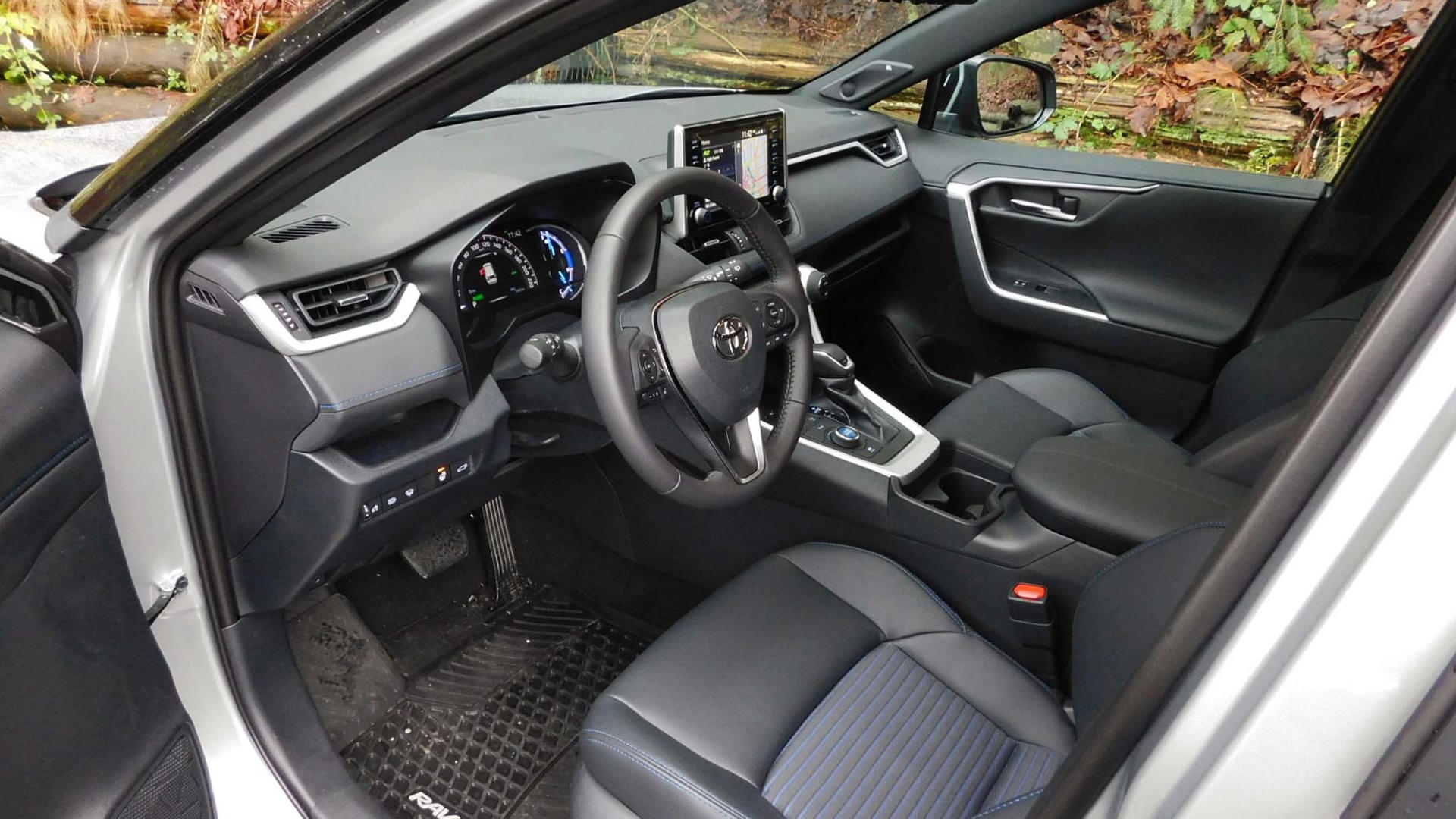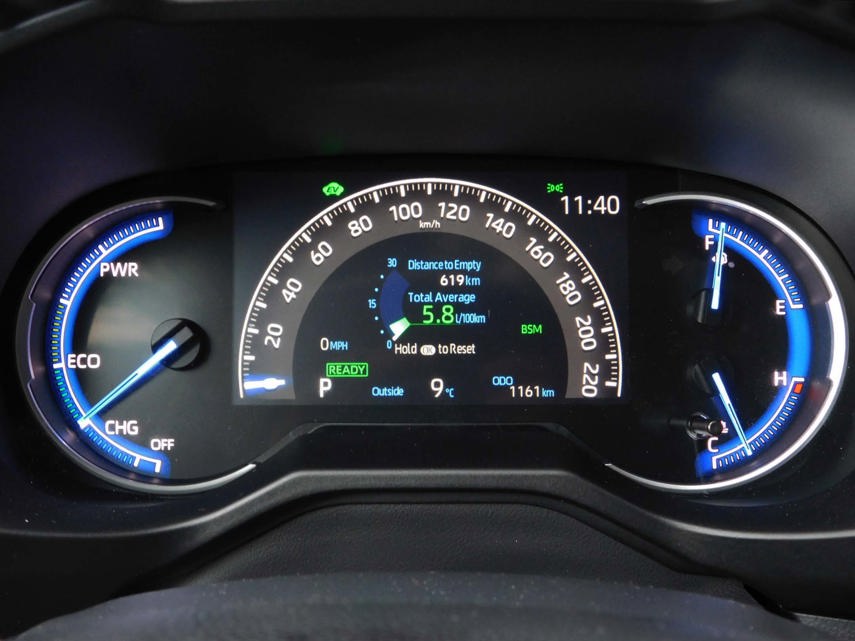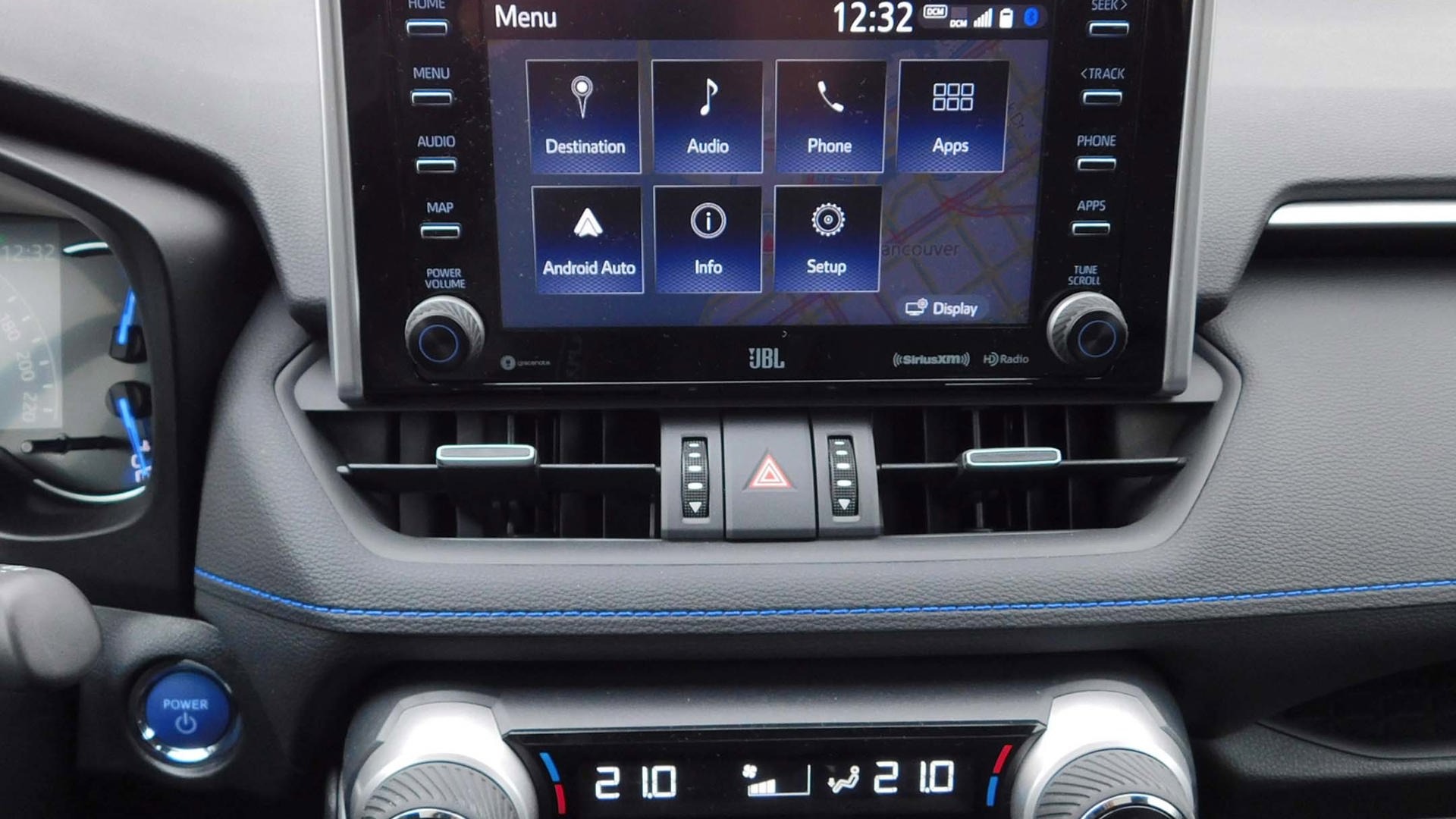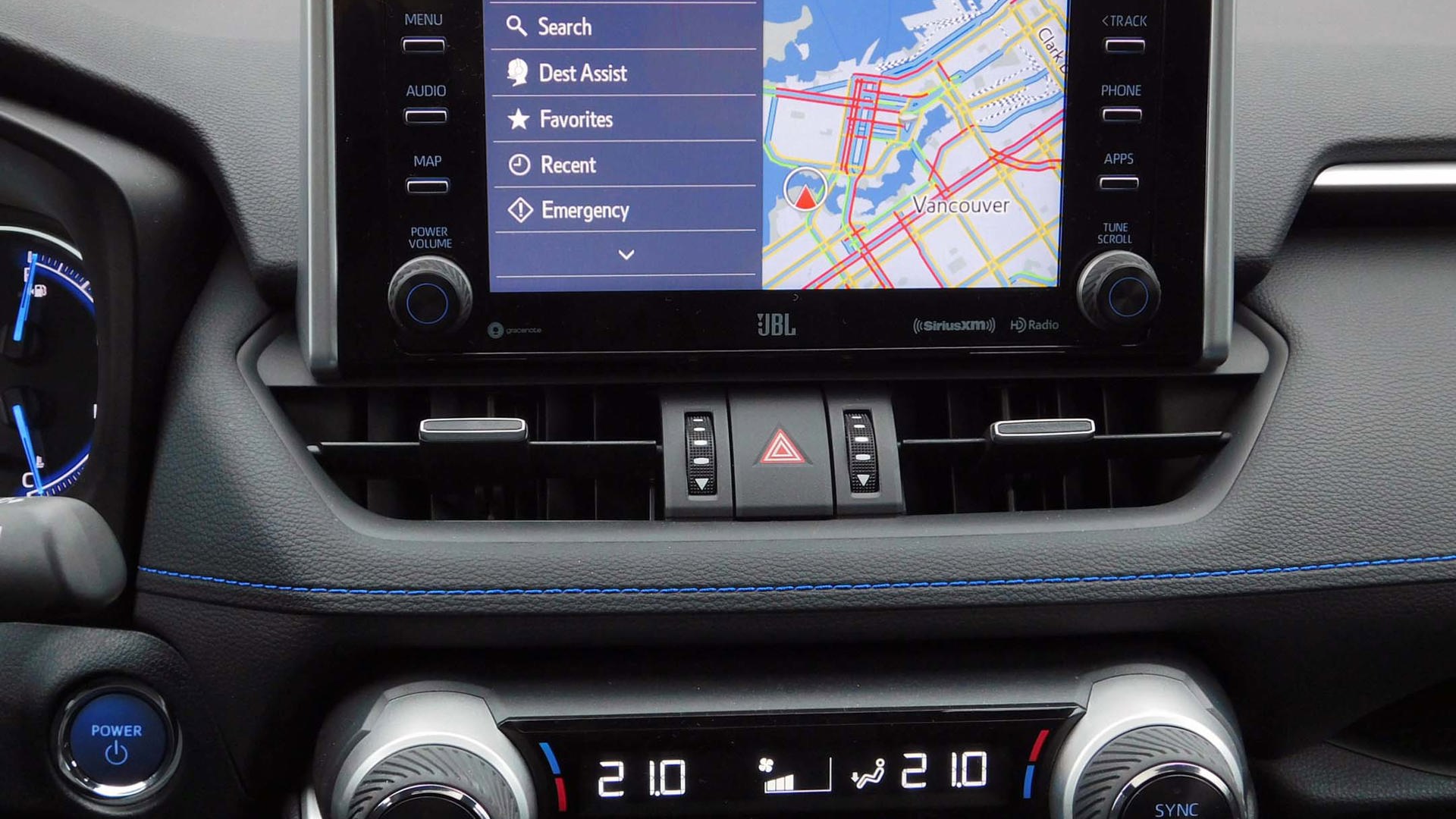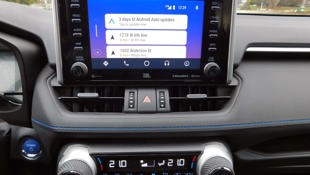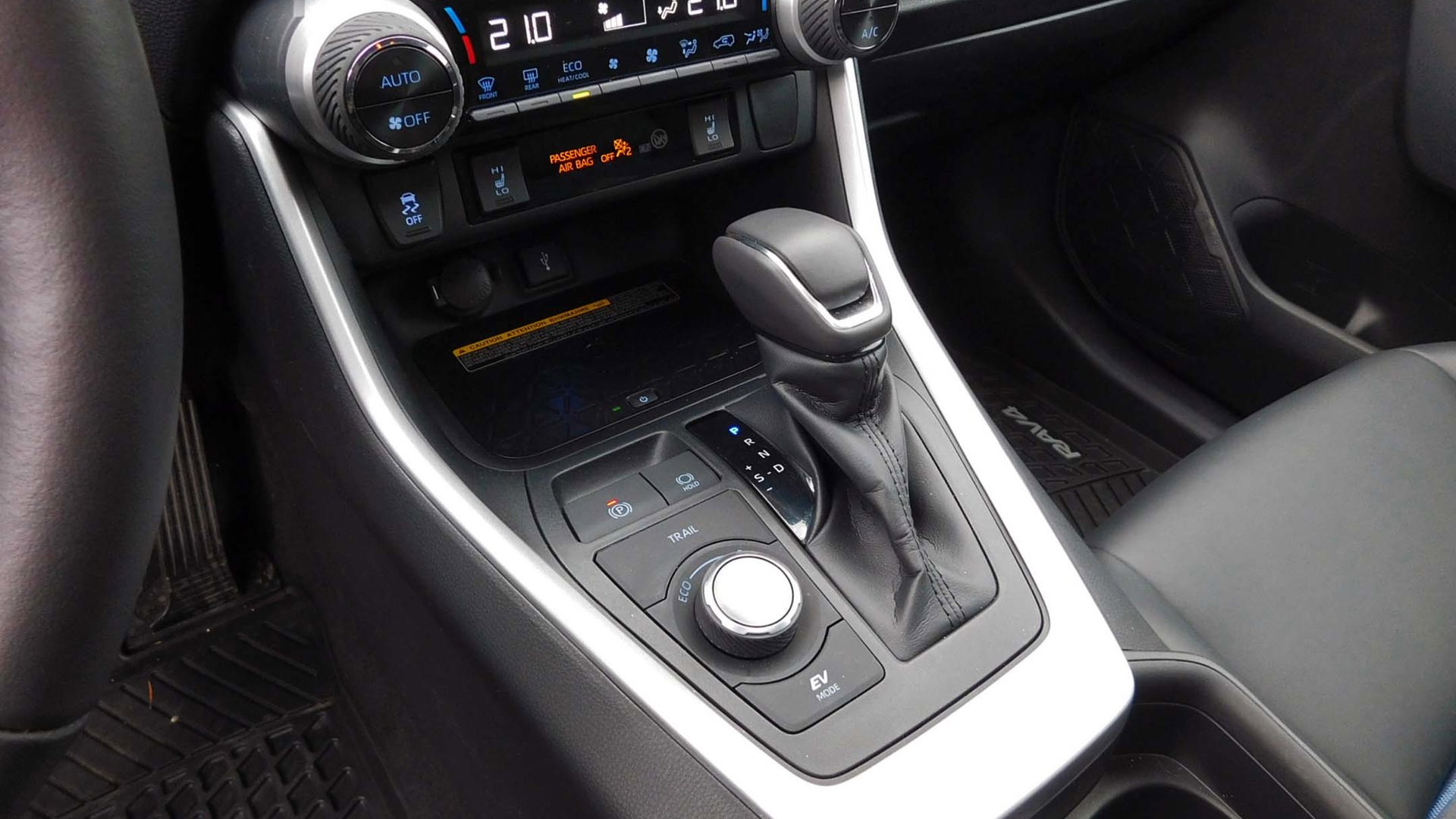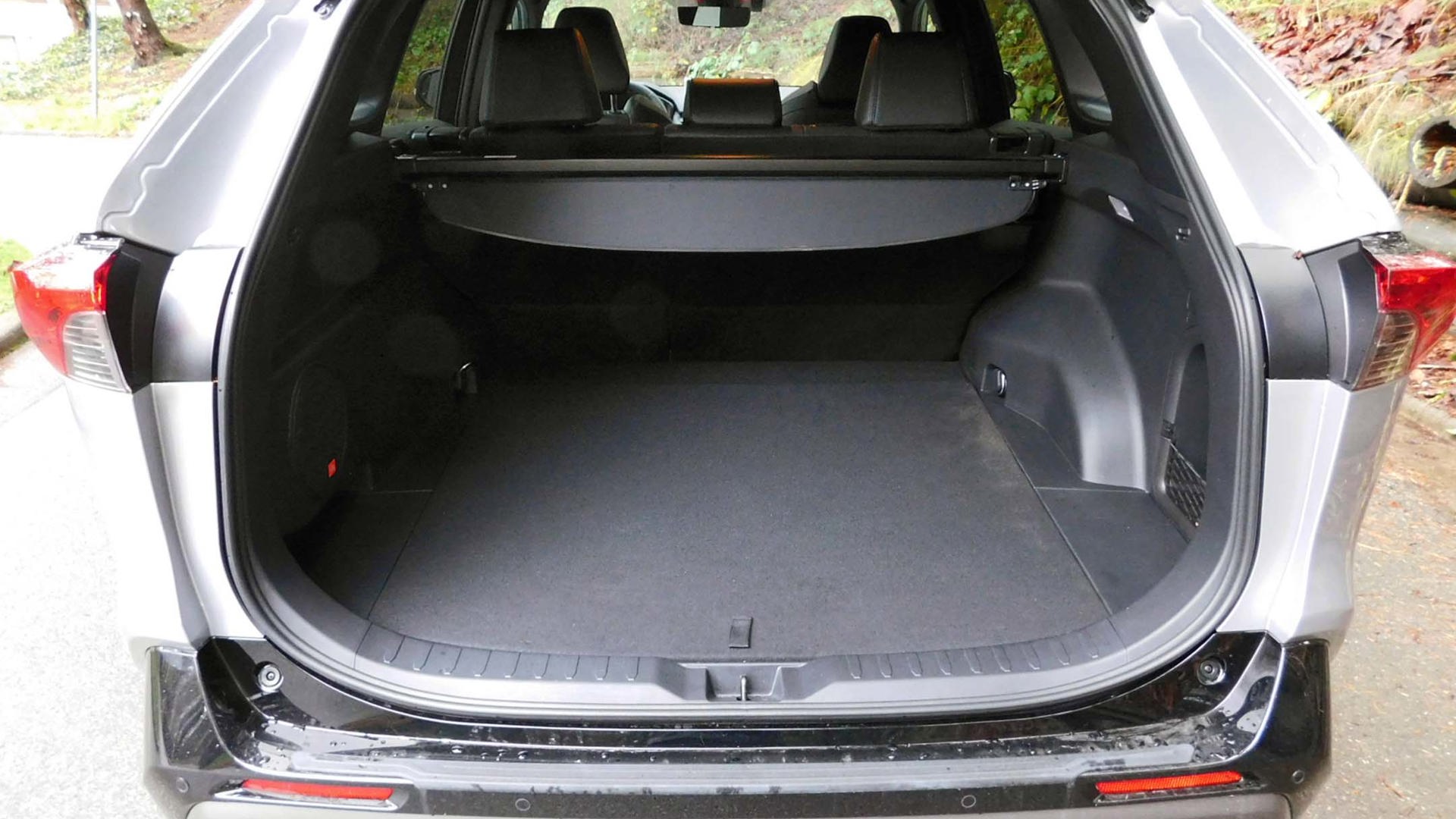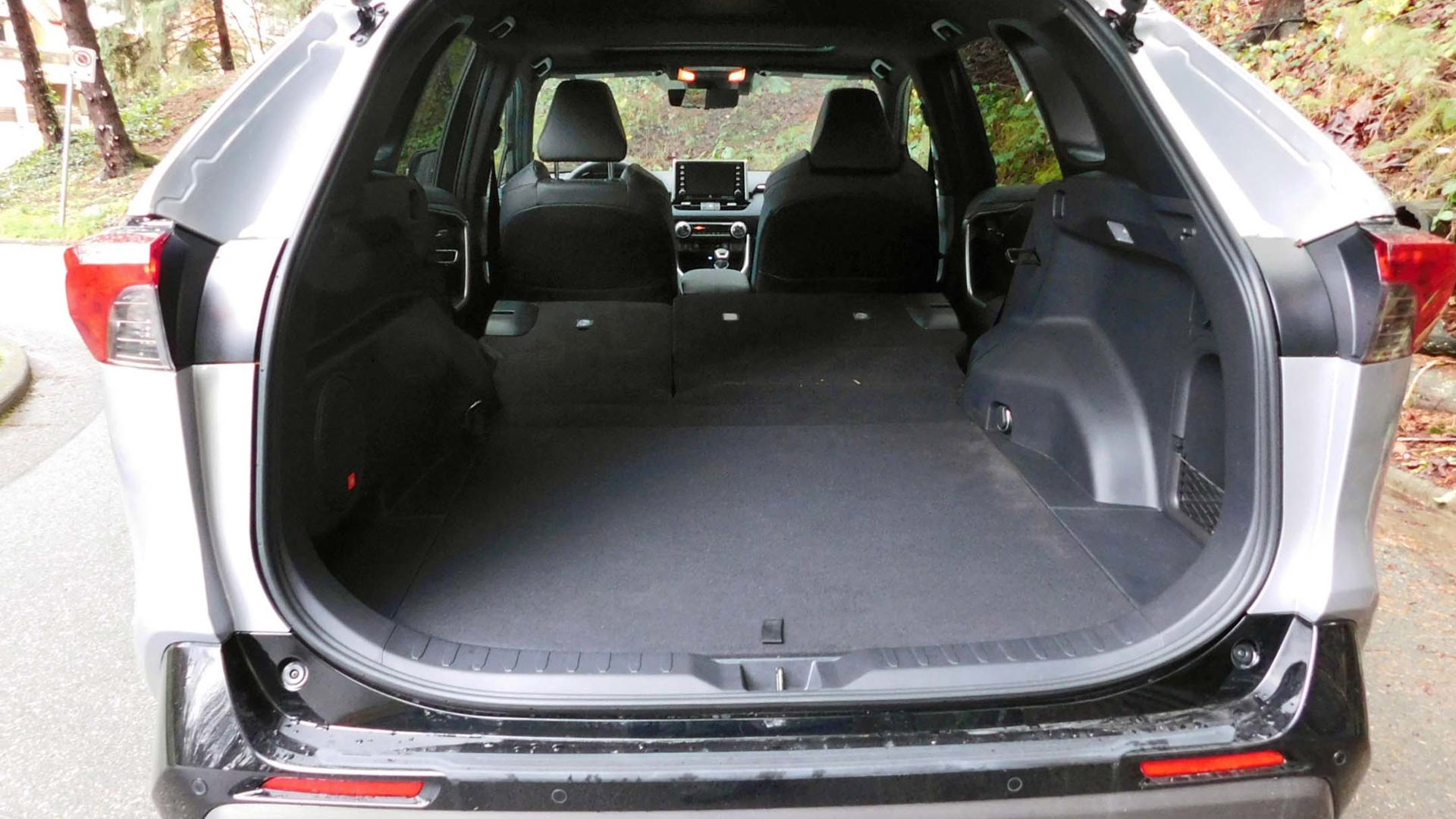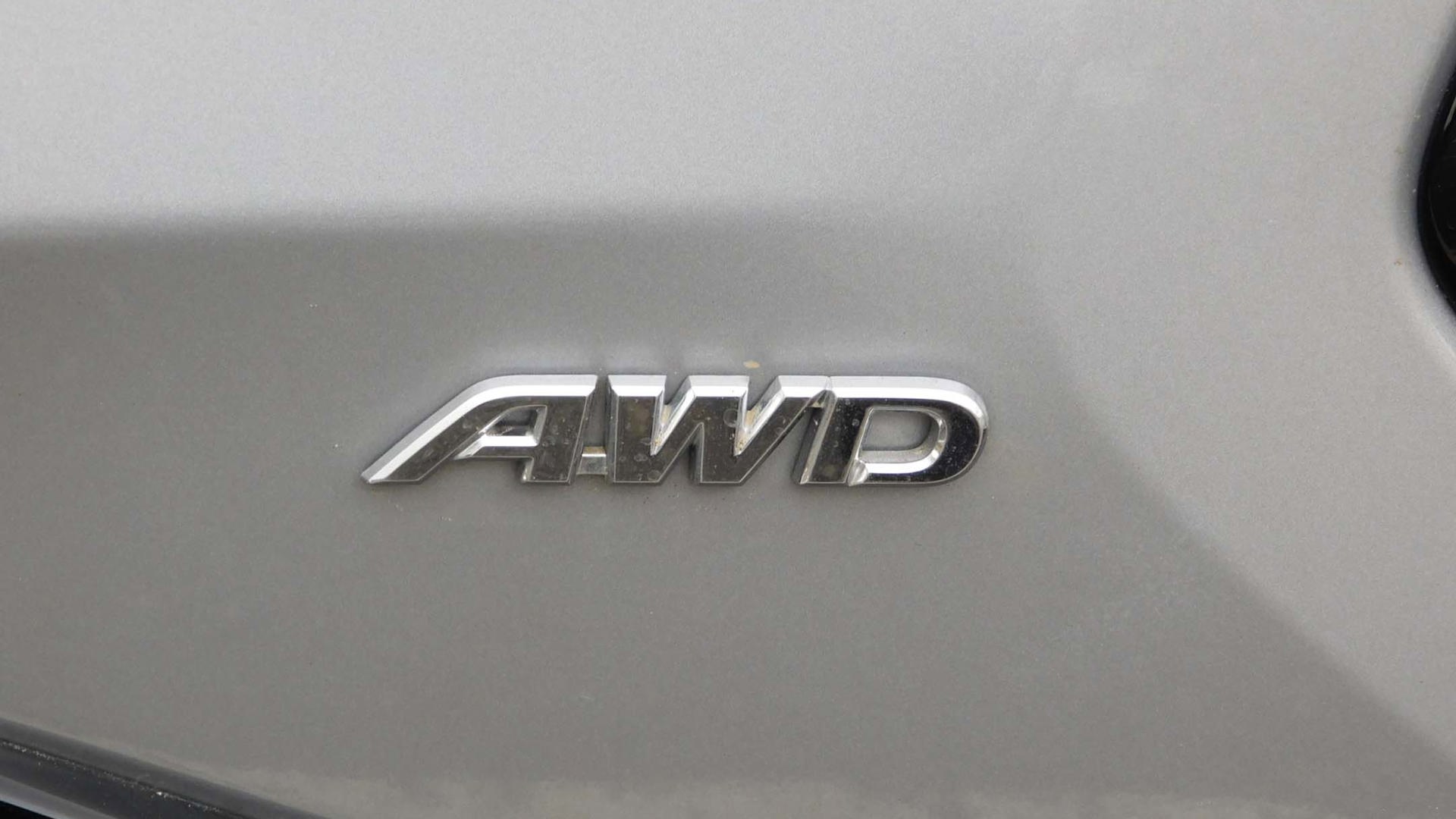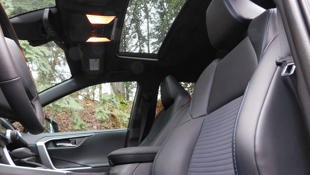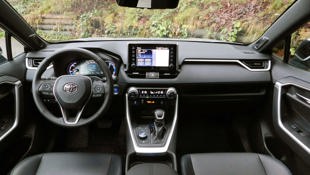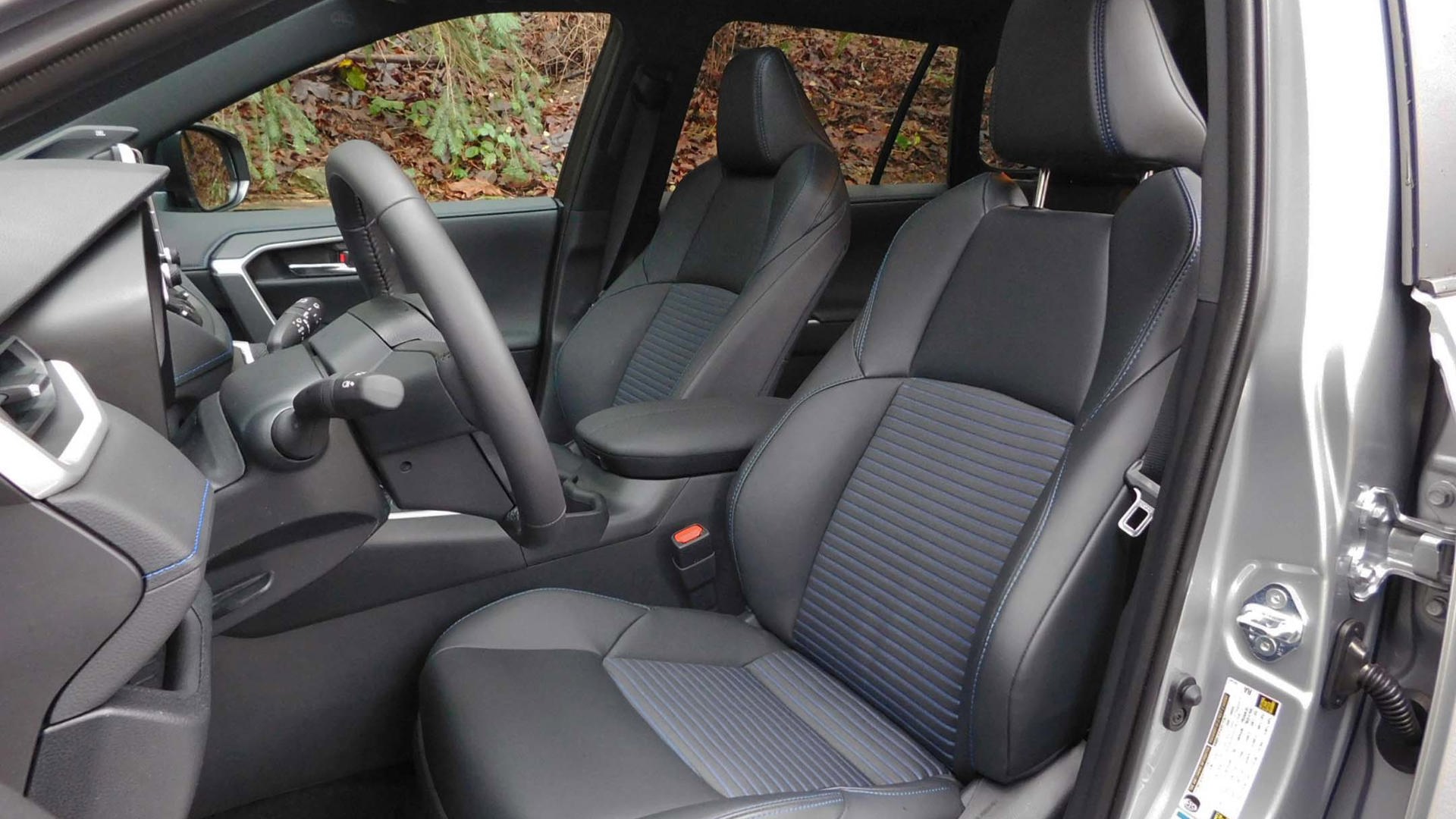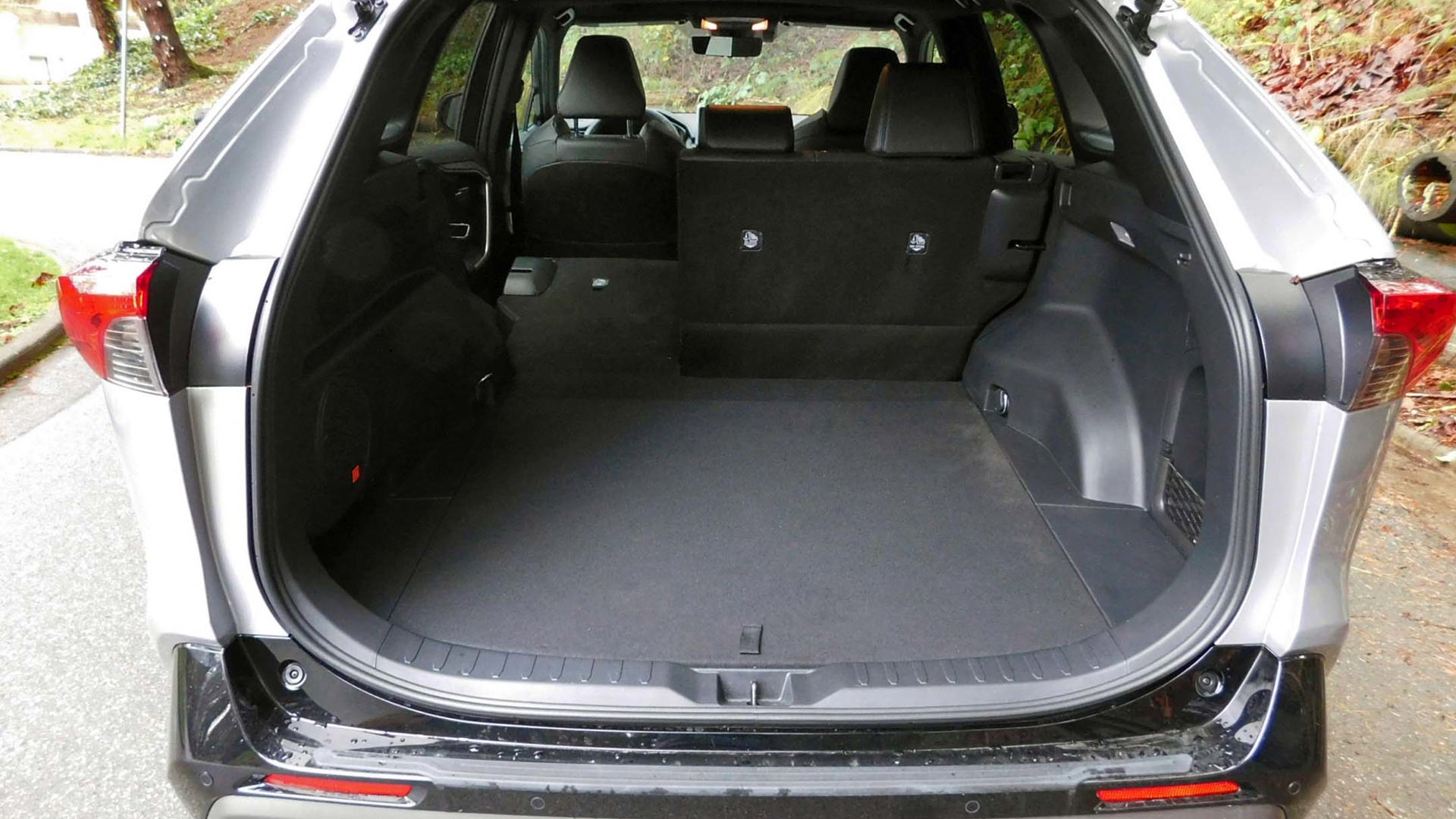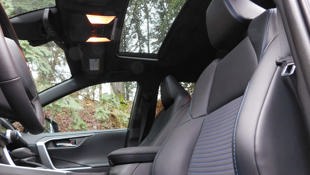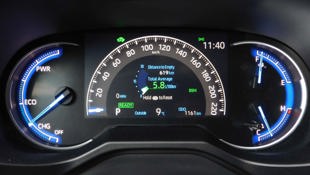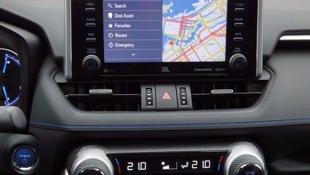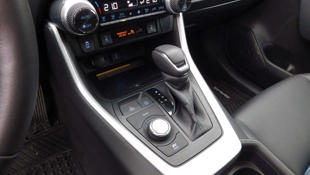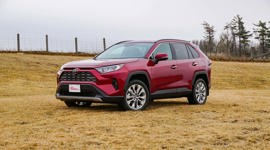 AutoTrader SCORE
AutoTrader SCORE
-
STYLING8/10
-
Safety9/10
-
PRACTICALITY8/10
-
USER-FRIENDLINESS8/10
-
FEATURES8/10
-
POWER7/10
-
COMFORT8/10
-
DRIVING FEEL7/10
-
FUEL ECONOMY9/10
-
VALUE7/10
Built in Ontario at Toyota’s Woodstock and Cambridge plants, the RAV4 has been a perennial hit with Canadian buyers. The fifth-generation model – introduced for 2019 with a crisp-handling new chassis architecture and rugged-looking new style – is proving more popular than ever: While the 2018 RAV4 barely edged out Honda’s CR-V for the top sales spot in the small SUV segment (55,385 units versus the CR-V’s 54,879), in 2019 the new RAV4 outsold the Honda 65,248 to 55,859.
For 2020 changes to the RAV4 are few, with the biggest news being a new TRD Off-Road trim option for the conventionally powered RAV4, to help compete against the likes of Jeep’s Cherokee and provide a compact alternative to Toyota’s own 4Runner TRD.
There’s no TRD trim option for the RAV4 Hybrid (the subject of this review), but it does get one significant addition in the form of Android Auto compatibility. So the RAV4 now boasts both popular smartphone connectivity options, joining Apple CarPlay, along with Amazon Alexa and Toyota’s own Entune 3.0 system.
Styling: 8/10
While most compact crossovers are steering towards increasingly sleek, mall-friendly styling, the new RAV4 has taken a sharp turn in the opposite direction, borrowing cues from Toyota’s truck lineup to give the RAV4 an angular and decidedly muscular appearance. The 2020 RAV4 looks like it wants to go play in the mud, and while it may not appeal to everyone’s taste, it appears that buyers are responding favourably.
Power: 7/10
The RAV4 Hybrid is powered by a 2.5L four-cylinder engine combined with two electric motors for a total of 219 hp sent to all four wheels as needed (the front wheels are driven by the gas motor paired with a 118-hp electric motor, while the rear wheels are driven by a 54-hp electric motor). The conventionally powered RAV4 makes 203 hp, so the hybrid is in fact the more powerful and quicker of the pair (it’ll do 0–100 km/h in about 8 seconds, versus 8.5 seconds for its conventional sibling).
Because its gas engine doesn’t have to work as hard most of the time, the hybrid is also quieter than the conventionally powered RAV4 (one of the few complaints against the latest RAV4 is its somewhat noisy engine).
Fuel Economy: 9/10
Where the conventionally powered RAV4 with all-wheel drive is rated at 9.2/7.1/8.2 L/100 km, city/highway/combined, the all-wheel drive 2020 RAV4 Hybrid is rated at 5.7/6.3/6.0 L/100 km. With Canadians driving an average of 15,200 km per year, according to Natural Resources Canada (NRCan), and spending an average of about $1.25/L on gas, that represents annual savings of about $418 (more if you drive mostly in the city). The hybrid’s regenerative brakes mean you’ll also save on routine brake maintenance.
During my week with the 2020 RAV4 I covered roughly 350 km, achieving fuel economy somewhat better than rated on the highway (5.6 L/100 km) and somewhat worse in the city (6.7 L/100 km). Over the course of several thousand kilometres, a 2019 RAV4 Hybrid I drove last year showed a long-term mixed average of 6.1 L/100 km – almost spot-on the official 6.0 L/100 km combined rating. Any way you measure it, those are excellent numbers.
Practicality: 8/10
Practicality is the primary calling card of compact crossovers, and the RAV4 Hybrid doesn’t disappoint. It offers plenty of room for four or five passengers, lots of useful interior storage cubbies and – certainly with the XLE trim and XSE Technology package – all the creature comforts you might expect.
Space-wise, with the driver’s seat set for my 5-foot-11 frame, my 6-foot-3 son fit comfortably behind me when we picked him up at the airport, and the RAV4’s 1,059-L cargo area easily swallowed his huge checked airline suitcase, carry-on, and electric guitar.
The fifth-generation RAV4 adds a bit of extra capability on cottage trails and in other off-road situations, with shorter overhangs and an extra inch of ground clearance compared to the previous generation. On-road handling is also improved thanks to a slightly longer wheelbase and a lower overall centre of gravity, which was accomplished by lowering the mounting points for the engine and transmission.
Safety: 9/10
The RAV4 Hybrid’s practicality extends to an impressive suite of standard active safety technology across all grades, including automatic high-beams, lane-tracing assist, lane-departure alert with steering assist, blind-spot monitoring with rear cross-traffic alert, pre-collision system with pedestrian/bicycle detection, and dynamic radar cruise control. This last feature is a real boon for drivers whose regular commute includes congested highway traffic.
My tester’s XSE Technology package added extra safety gear including parking sensors and automatic rear cross-traffic braking.
Features: 8/10
Even in base LE trim, the RAV4 Hybrid is a well-equipped machine, with all the expected features such as power locks and windows, dual-zone climate control, heated front seats, heated power mirrors, tilt/telescoping steering wheel, a six-speaker audio system with seven-inch touchscreen, and much more.
My test vehicle’s XLE trim added items such as a power moonroof, bigger 18-inch wheels (replacing 17-inch wheels), sport-tuned suspension, push-button start, heated leather-wrapped steering wheel, power-adjustable seats, rain-sensing wipers, a tonneau cargo cover, LED projector headlights, fog lamps, and a power liftgate.
On top of this, the optional $6,220 XSE Technology package fitted to my test vehicle added the previously mentioned parking sensors and cross-traffic braking, an upgraded (and very nice-sounding) 11-speaker JBL audio system with larger eight-inch touchscreen, embedded navigation and weather/traffic, a wireless phone-charging dock, a bigger multi-info display, digital display rear-view mirror with Homelink, upgraded mixed fabric and faux leather upholstery, and black alloy wheels.
User Friendliness: 8/10
Thanks to solid ergonomics, the RAV4 Hybrid is both easy to live with and easy to drive. The principal controls are all laid out sensibly, with big climate control knobs that can be operated while wearing gloves. The infotainment system has a reasonably intuitive interface, and includes knobs for basic volume and tuning functions. I had no problem folding or deploying the rear seats (even while holding a camera in one hand), and the trunk floor can be flipped to provide a durable, easy-to-clean hard surface when transporting messy items.
The user experience isn’t perfect, however. The switch for the heated steering wheel is buried down where you have to take your eyes off the road to find it, and you can’t get a hands-free liftgate unless you spring for the top-of-the-line Limited trim. If you’re going to have a power liftgate – especially one as slow as the RAV4’s – a hands-free option should be part of the package.
Comfort: 8/10
The RAV4 Hybrid’s roomy cabin and abundance of storage cubbies makes it a pleasant place to spend time, and the seats are all generally comfortable and supportive, with the front seats offering a good range of adjustability and the rear seats offering a few degrees of recline. I liked the mixed upholstery (it puts the fabric where breathability is most important), although I’d prefer slightly longer seat cushions.
Driving Feel: 7/10
The 2020 RAV4’s Toyota New Global Architecture (TNGA) offers up a comfortable ride and assured, predictable handling. Its lowered centre of gravity provides somewhat crisper cornering response than the previous generation RAV4, but I’d prefer a little more steering feedback. Overall, the driving experience is more relaxing than engaging, which perfectly suits this practical and thrifty crossover’s mission.
Value: 7/10
Compact crossovers are hugely popular and the market offers plenty of choice, but the offerings thin out quickly when looking at hybrid options. The Kia Niro, which starts at $25,495, has been a strong contender since it was introduced in 2017. while the Ford Escape Hybrid offers new competition. The Escape is currently available only in top-line Titanium trim starting at $36,549.
Toyota’s RAV4 Hybrid offers a wide range of trims, with a base price of $32,350 for the LE trim, my XLE tester, starting at $35,350, and the top-line Limited trim starting at $42,790. This makes it a bit more expensive than the Niro at the bottom end or Titanium Escape Hybrid at the top end, but the RAV4 Hybrid nevertheless offers solid value.
The Verdict
Toyota knows what buyers want in a compact crossover, and the RAV4 Hybrid delivers with plenty of functionality, ample features, and proven drivetrain technology. New competitors are finding their way to market, but for buyers seeking a hybrid compact crossover, the RAV4 Hybrid remains a must-see contender.
| Engine Displacement | 2.5L |
|---|---|
| Engine Cylinders | I4 with hybrid motor |
| Peak Horsepower | 219 hp combined |
| Peak Torque | N/A |
| Fuel Economy | 5.7/6.3/6.0 L/100 km cty/hwy/cmb |
| Cargo Space | 1,059 / 1,977 L seats down |
| Model Tested | 2020 Toyota RAV4 Hybrid XLE |
| Base Price | $35,350 |
| A/C Tax | $100 |
| Destination Fee | $1,815 |
| Price as Tested | $43,485 |
|
Optional Equipment
$6,220 – XSE Technology Package, $6,220
|
|
